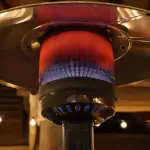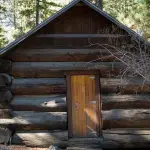
Having a backup plan for how to heat a home without electricity is important in case your power goes out. Whether it’s a snowstorm, heavy rainfall, or a sever thunderstorm, knowing how to heat a house without electricity can help you stay warm even in the coldest of conditions.
Properly insulating your home
There are several ways to keep your home warm without using electricity. The best way is to ensure that your home is well insulated. A well-insulated home is less likely to lose heat and is easier to heat than a poorly-insulated home. You should also keep your doors and windows sealed so that heat does not escape.
The best way to ensure that your house is properly insulated is to use a high-quality insulation product. The insulation should be placed on floors over unconditioned areas, such as garages or crawl spaces. It should also be applied to slab floors and cantilevered floors. Additionally, the foundation walls of unvented crawl spaces should be insulated. Insulation should also be placed under band joists.
Proper insulation also prevents moisture and mold from penetrating below-grade rooms. Using an insulated foundation can also help prevent problems with moisture and radon infiltration. You can use insulating concrete forms or blocks to add insulation to your home’s foundation. These materials are impractical for older homes, but can be installed on new construction.
Using a wood stove or fireplace
Wood stoves and fireplaces are a great way to heat a home without electricity. These devices have several advantages, including a low carbon footprint, and they are easy to use and install. However, if you plan on using a wood stove or fireplace as the main source of heat, it’s important to make sure that you use them properly. If you use them incorrectly, you could end up wasting a lot of heat.
First of all, wood pellets and wood stoves have a low carbon footprint, so they can help reduce your energy bills. Wood pellets are a renewable resource, whereas natural gas, propane, and heating oil are not. Harvesting these fossil fuels is an energy-intensive process that contributes to climate change. Additionally, wood stoves and fireplaces can help increase the value of your home. Some studies show that homes with a fireplace increase in value by anywhere from $1,000 to $4,999.
Besides being a great source of renewable energy, wood burning is also cheaper than other forms of energy. Wood stoves and fireplaces are freestanding units that have a front firebox for storing wood. The smoke that they produce is expelled through tubes called flues.
Using a gas generator
Using a gas generator to heat – or power appliances – in a home without electricity can be a great option if the power goes out. You just need a gas generator with a high enough wattage to power all of your appliances, and a supply of gasoline to run it. But you should consider other alternatives to heating and lighting your home as well.
Firstly, you’ll need to decide on the size of generator. The most common unit for home emergency use is a 5,000-watt model, which can power multiple circuits. It also has the advantage of running for at least 10-12 hours on a full tank of gas.
Secondly, make sure you have extension cords available. It’s important to use heavy-duty ones with 12-gauge wire. Make sure there are no nicks or exposed bare wire.
Using a non-pressurized alcohol heater
A non-pressurized alcohol heater can be an effective way to heat a home in the winter without the use of electricity. These units use denatured alcohol as fuel and are portable. They also have a long shelf life and can be used inside and out.
An alcohol heater can provide heat to about 3,200 square feet of space. These heaters can also be used to heat water. The fuel for these devices is cheap and can be purchased in bulk. The most common alcohol to use is denatured alcohol, but other types will also work.
A non-pressurized alcohol heater is very easy to use. Its design is easy to follow and requires very little skill. The heat is generated by a flame that comes out of holes in the top of the pot. The alcohol stays in the canister when not in use.





